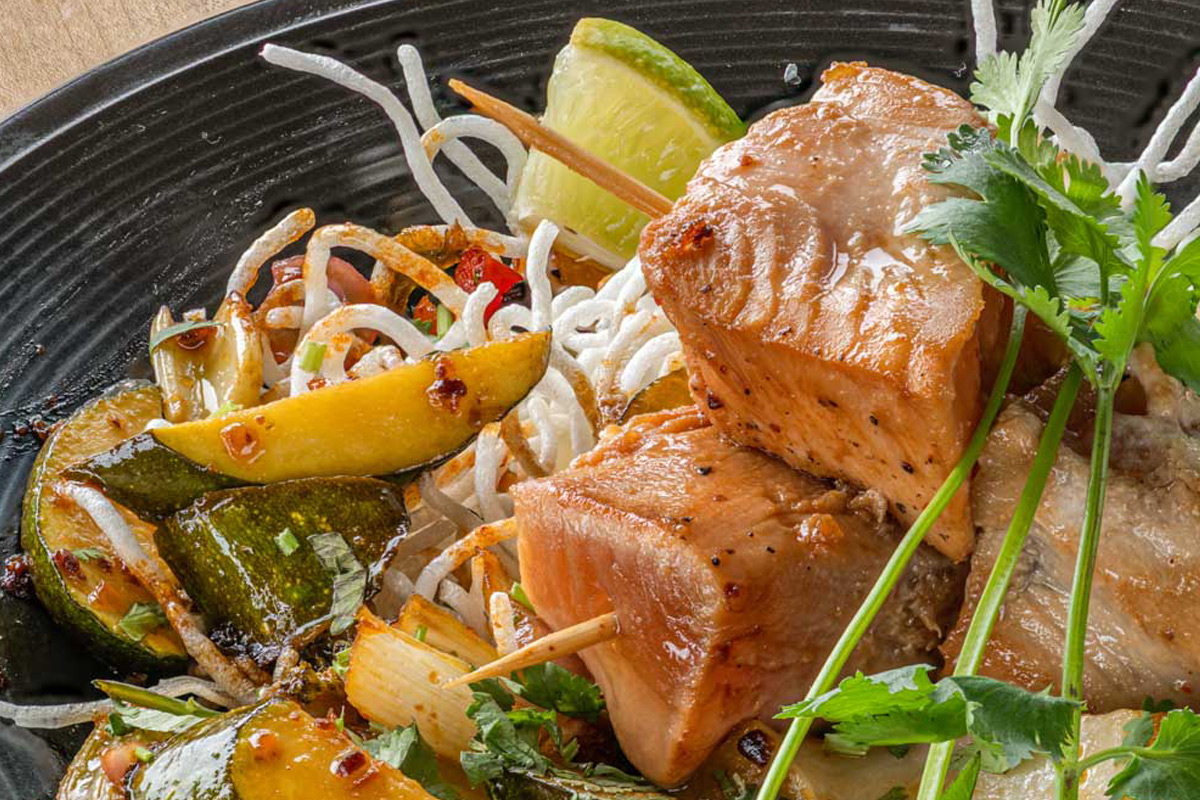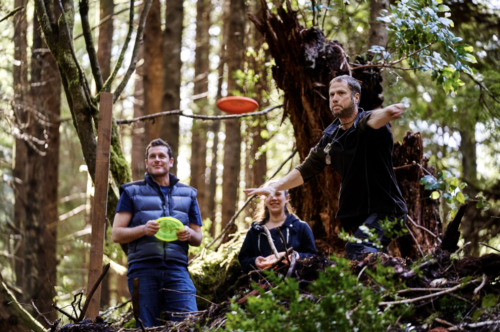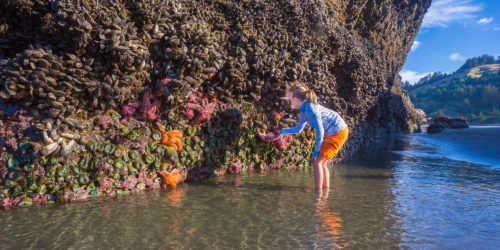Meet Siletz Valley School’s dynamic culinary director, Patrick Clarke.
Patrick Clarke first discovered the power of food as a cook in the U.S. Army. Soon after joining the service, he was deployed abroad, and while cooking for troops in Iraq and Afghanistan, he began to notice how food encouraged conversation, fostered community and brought comfort.
“For me cooking is all about taking care of people and nurturing them,” says Clarke. “If someone was homesick and reminiscing about gumbo, I’d do my best to make gumbo in the middle of Afghanistan.” Over and over, he saw the emotional resonance when something tasted like home. “That’s why I love food,” he says.

Cooking for Comfort and the Future
Now he teaches culinary classes at the Siletz Valley School, a K-12 charter school where the majority of the students are members of the Confederated Tribes of Siletz Indians. In two short years, Clarke established a robust culinary program where students learn to grow, harvest and cook a variety of foods while elevating local ingredients and celebrating Indigenous traditions. For these efforts and more, he was named the 2025 Teacher of the Year by the Oregon Small Schools Association.
One of his most impactful partnerships to date is a pilot seafood-butchery program launched by the Oregon Ocean Cluster. Clarke gets fresh-caught salmon, lingcod and sablefish delivered to the school each week, then leads hands-on training in filleting and processing local seafood. “We cook really great dishes that feed students across all the grades,” he adds.
Last year his students took their skills on the road and catered multiple events from the YA-TR’EE-YAN (Feast) food trailer. In November students will cook alongside executive chef Jack Strong, a James Beard-nominated chef and member of the Confederated Tribes of the Siletz Indians who leads the culinary team at The Allison Inn and Spa. It’s the second year the students will participate in this weekend-long celebration of Indigenous communities that includes a walk-around reception with artisans and performers and a First Foods Dinner.

Building Culinary and Community Connections
“Food touches everything,” says Clarke. For him food is not only a great connector, it’s the future for his students. “On field trips, I ask everybody we meet to visit the class and speak to the students about their job,” says Clarke. He takes students anywhere that might spark a deeper interest, from fishing charters in Depoe Bay to shucking oysters in Newport.
His ultimate goal is to show students the world of careers that exist, especially ones connected to the local fishing industry, whether that’s working on boats, in processing plants or in restaurant kitchens. Clarke recently secured jobs for three students with an innovative program led by Local Ocean and the Central Coast Food Web on a 100% Fish Utilization project.
He’s also forged connections with local aquaculture experts including Alanna Keiffer of Oregon Seaweed and Aaron Huang of Oo-Nee Sea Urchin Ranch, introducing his classes to emerging seafood entrepreneurs. His students regularly visit oyster beds at Oyster Bluff on Yaquina Bay — owned by Siletz Valley School math teacher Brian Arnold — and recently launched a small aquaculture project in the classroom.

Visit Clarke’s Favorite Coastal Eats
When Clarke isn’t in the classroom, he’s a regular at many coastal hot spots, including Local Ocean, which he considers the best seafood restaurant in Newport. “They buy directly from fishing boats in Newport in a size that’s unimaginable to any other restaurant,” Clarke says. He’s also a regular at Kyllo’s in Lincoln City and The Salmonberry in Wheeler.
If he’s seeking fresh seafood to cook at home, he heads to Barnacle Bill’s Seafood in Lincoln City — a seafood market that’s been in business since 1949. Another favorite is Chelsea Rose Seafood, a family-owned business that sells fresh catch from a historic fishing vessel in Newport. “You get your fish filleted right in front of you by the most skilled fillet ninjas I’ve ever seen,” Clarke notes.
Clarke also forages for wild ingredients like mushrooms, nettles and clams. Depending on the season, he’ll hike the trails at Bob Straub State Park in Pacific City and Cape Perpetua Scenic Area, a forested headland located a few miles south of Yachats. For clamming adventures, he road-trips up the coast to Netarts Bay, a prime spot for gaper and butter clams.
If you are seeking more immersive culinary routes to explore, check out the Central Coast Food Trail, a collection of self-guided jaunts that spans from Lincoln City to Florence. In addition to over 15 working farms, you’ll find nearly 20 restaurants and seafood markets.
– By Kerry Newberry
in Food & Drink



